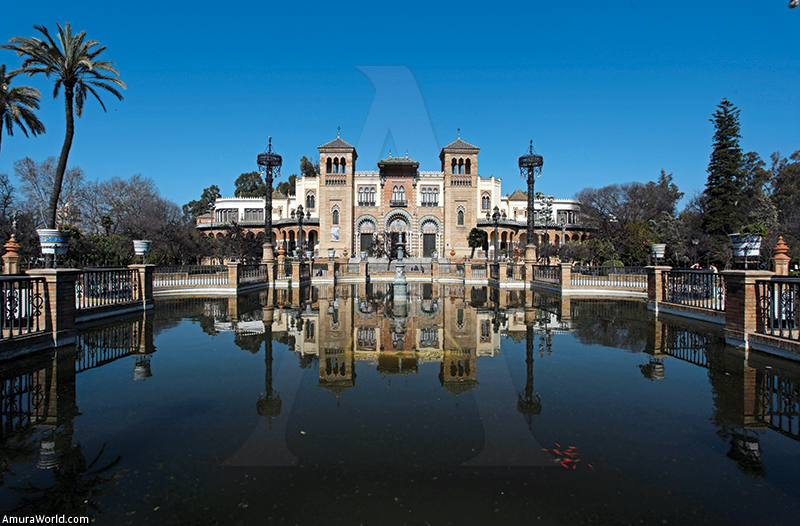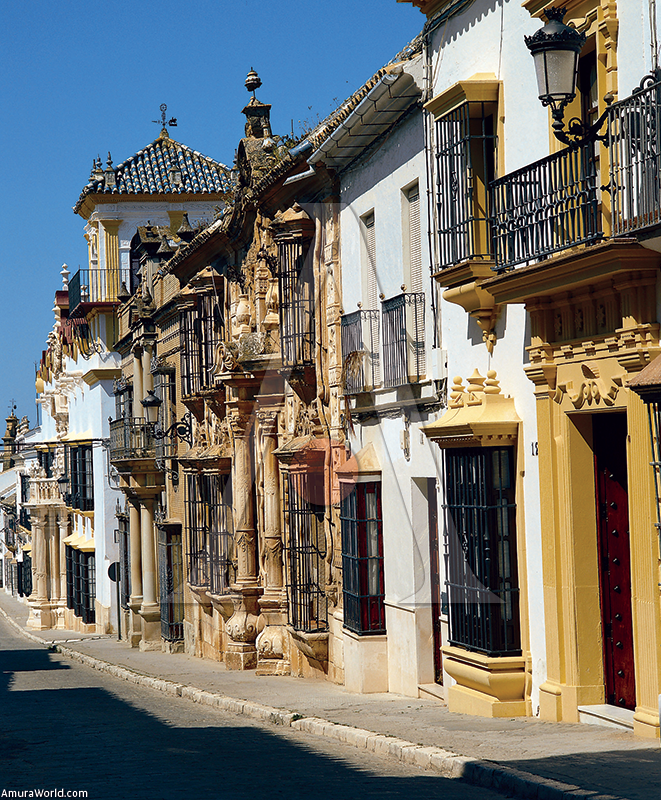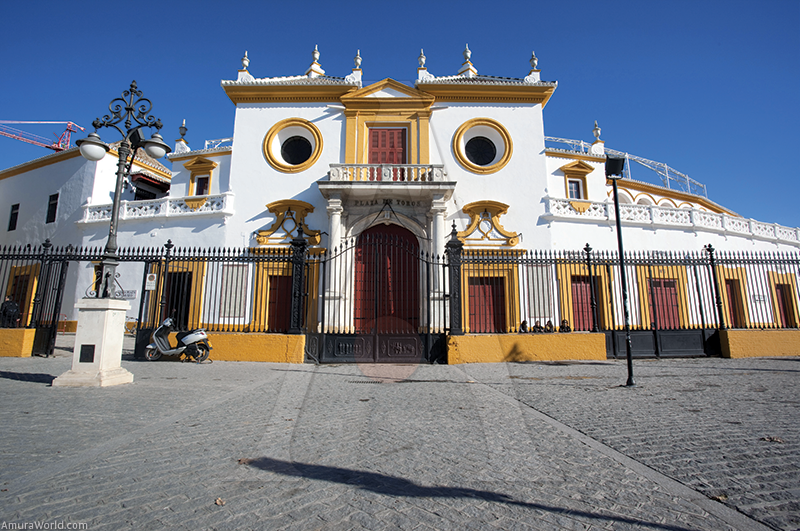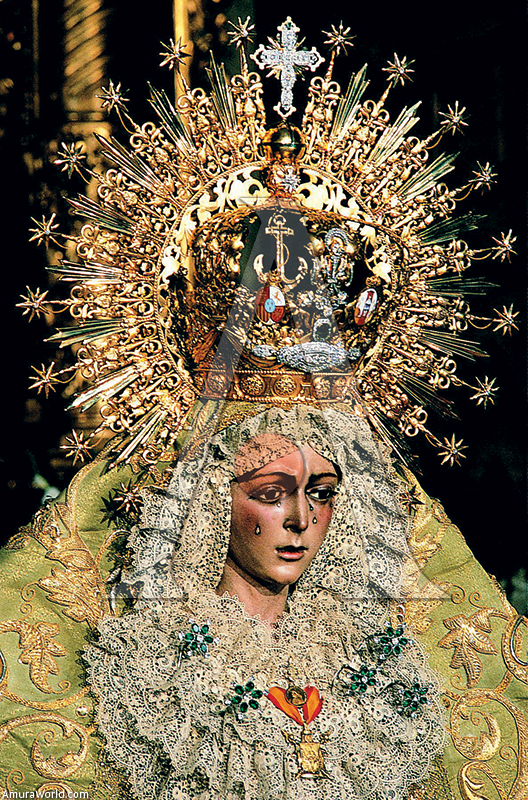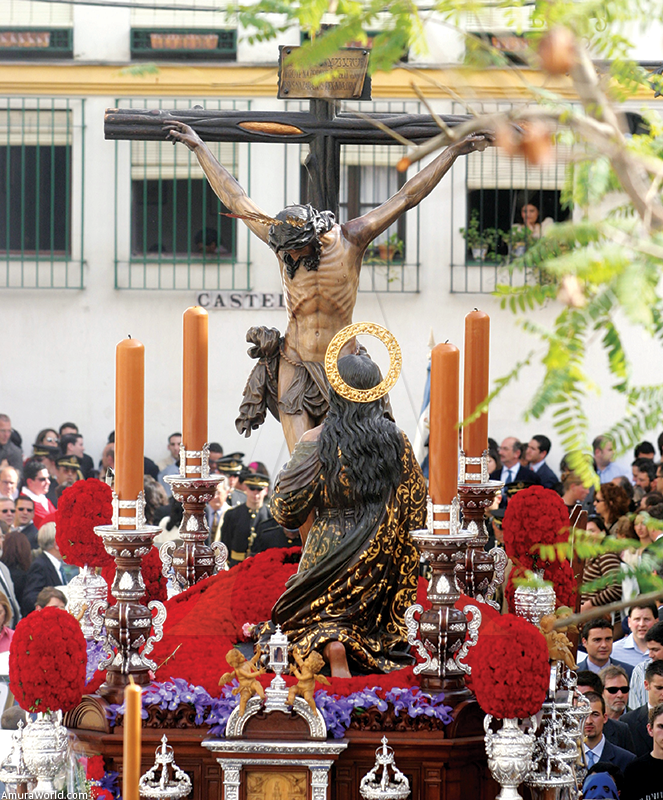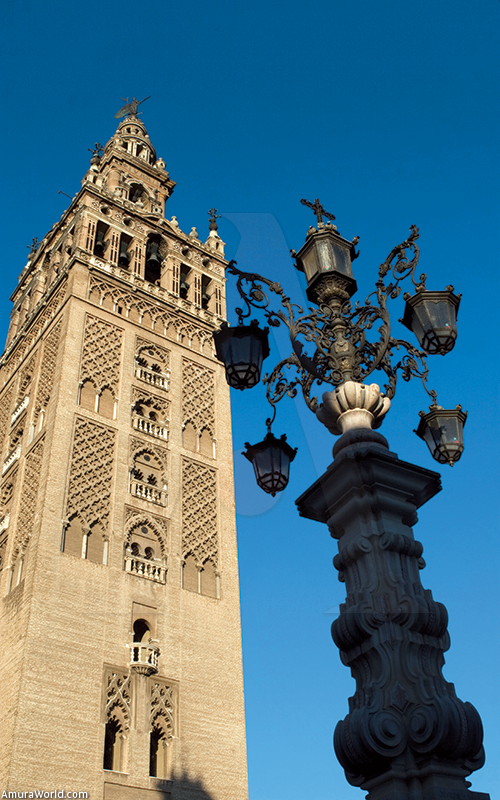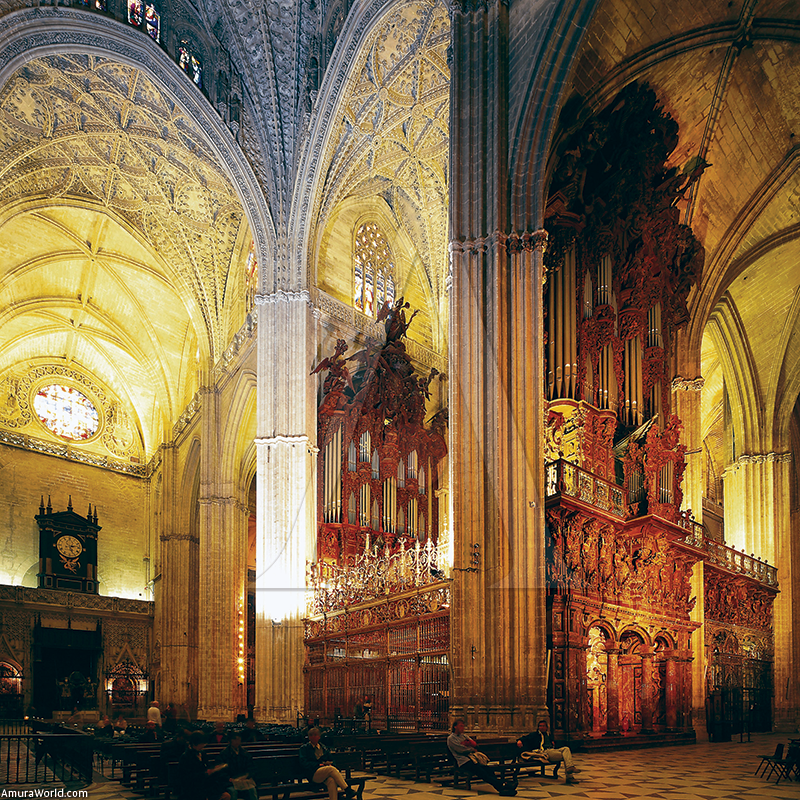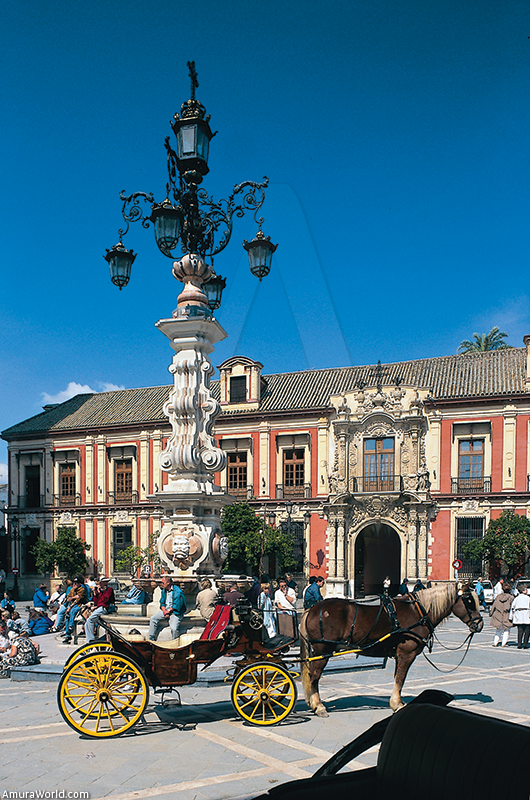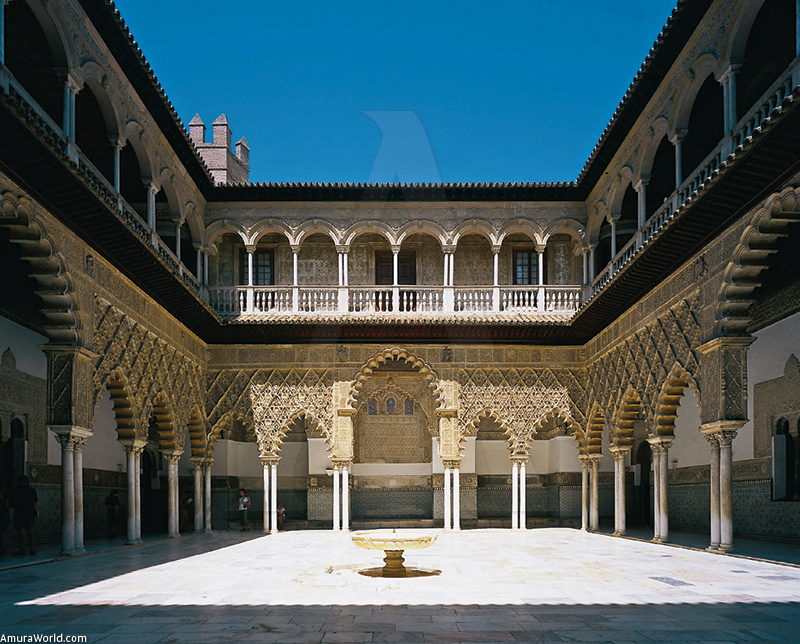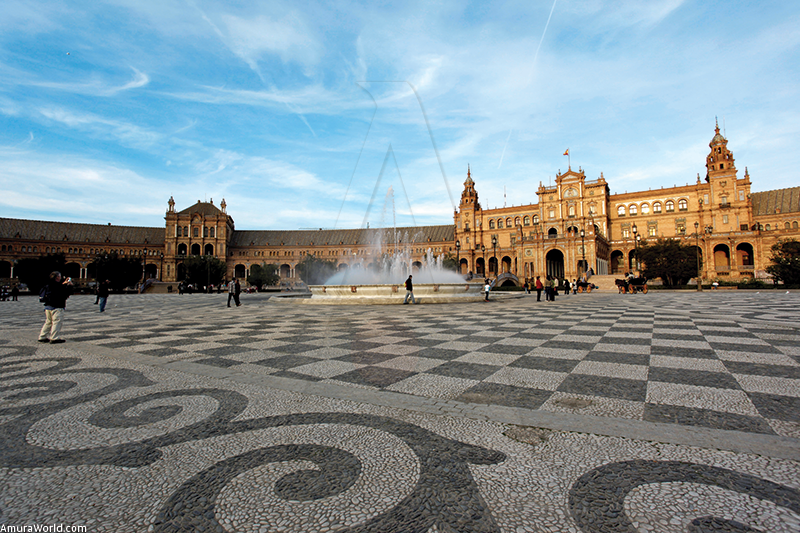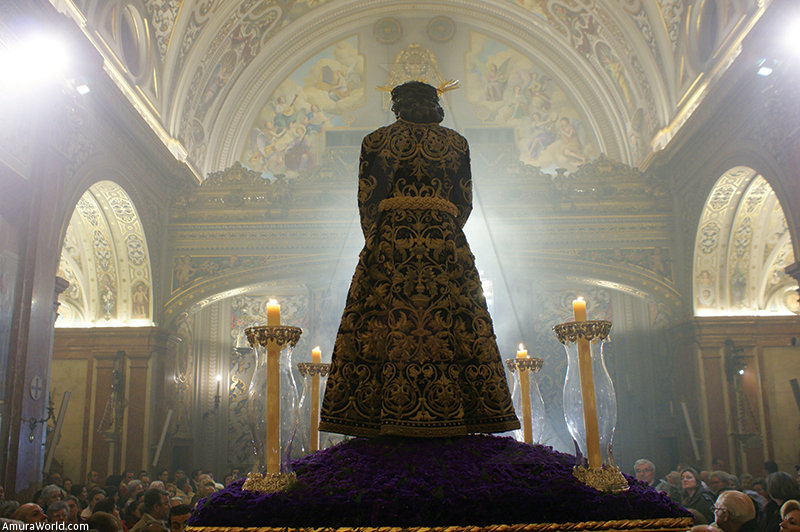To talk about Seville we must start by understanding its history and multiethnic heritage.
Since ancient times there’s been a lot of move ment and multicultural presence with the Carthagi nians, Romans and Italics, aside from the Muslims and Vikings, all of this on the first centuries a.C.
In 1248 it was incorporated to the Christian Crown of Castilla y Leon, after being conquered under the reign of Fernando III, who was the first one to be buried in the Cathedral of Seville and since then it was populated by the Castilian Aris tocracy. As the capital of the Kingdom of Seville, it was one of the cities with vote on Cortes and hosted the itinerant Court in several occasions.
During the early middle age, the city, its port and its active colony of Genovese merchants were located in a surrounding but important position in the international European commerce. In those times it suffered dramatic economic, demographic and social convulsions like the black pest in 1348 or the antiJewish revolution in 1391.
After the discovery of America in 1492, Seville became the economic center of the Spanish Empire. The Catholic Kings founded the “House of Contracts”, from where all journeys were hired and directed, all the wealth coming from America was collected and all the relations with the new world were directed alongside with the University of Merchants.
MultiCultural blossoms
In the 16th Century, Seville experimented a great development and some of the most important buildings in the Historic Center were built. The city became a very important multicultural center, which also helped with the blossoming of the arts, coincidentally being its most brilliant time: The Baroque.
It was affected by the 16th century crisis, which meant an economical and demographical decay, while sailing through the Guadalquivir River was getting harder every time, until the commercial monopoly and its institutions moved to Cadiz.
The city’s revitalization came in the 19th Century with the industrialization and the development of the Spanish railway network, coincidentally in the Romanticism.
During the 20th century, aside from the tragic Civil War, there were decisive events like the Iberoamericana Expo in 1929, the Universal Expo in 1992 and the election of Seville as capital of the Andalucian Autonomy.
It’s because of these reasons and for its people, that when a visit is planned to this region, especially to Seville, you are surrounded by colors, smells and essences of all kinds, a mixture between the baroque and the Moroccan, with a Spanish cover.
This journey sets sail at the shores of the Guadalquivir River, that along its shoreline has paddlers getting ready for their regattas, tourists, gypsies that have built their homes on the shore, acrobatic water skiers and eel fishers; who complain about how underpaid their business is.
The Theater and Bullfighting Plazas
Sailing across the Grande River we find the Golden Tower, even though it's spectacularly diminished, it’s part of the most special monuments in Seville, due to it’s golden glare on the river. During the restoration project in 2005, it was proven that this glare, that until then was believed to be from the tiles, was given to a combination of mortar, lime and pressed hay.
In this same place, we could enjoy the Maestranza Theater and the Maestranza’s Bullfigthing Plaza, that while looking at them, we were able to understand the mixture between modem and antique, that until this day prevails in almost all of Europe.
This theater, located in the façade of the Real Maestranza de Artilleria’s barracks, is considered to be one of the best avant guard theaters in Spain with the biggest stage in the country (construction dated on 1992), taking advantage of the cultural event of that same year, The Universal Expo.
The bullfighting Plaza of the Real Maestranza de Caballería in Seville, also offers a little of this bipolarity, since it’s one of the oldest plazas in the continent but nowadays hosts lots of bull runs especially on the fairs in April aside from being one of the biggest tourist attractions in the city for its spectacularity, the equestrian school and the Bull fighting Museum.
Later on, after an exquisite lunch and being safe from the heat, we continue sailing through the Guadalquivir until the next stop on the Cabin Lifts that takes us straight to the Cartuja Island, where most of the buildings that were part of the Expo in 1992 can be seen in complete harmony with some other new buildings where all kinds of companies reside.
The Macarena
Exiting the Island, and once again on firm ground, we head west towards the Macarena Neighborhood, that is where we met the first important church in Seville: The Basilica de la Macarena. It also has a museum where the treasure of the Virgin is kept, beautiful hand woven gold mantles, paintings, sculptures and more.
In this same place we can see the Door of the Macarena, located in front of the Basilica de la Macarena, one of the few remaining proofs that still stand from the walls of Seville, in which emperor Carlos I made his entrance. We walked a little further to appreciate the remains of these walls, that one day covered the entire city for its protection on the year 65 B.C.
The first day was over and we decided to head over and stay on the Alfonzo XIII hotel, that besides having a privileged location (since it was built on 1928 it was designed to be the most luxurious Hotel in Europe), still keeps most of its class with its Arabic influenced architecture, making a perfect match with the city.
The next morning we head to the center of the city on our way to the famous Sierpes Street, beginning at the Campana Plaza and ending all the way at the San Francisco Plaza, finding the City Hall at the same time.
The pedestrian street is filled with all kinds of commerce, renamed candy stores, coffee shops and taverns, for this reason there will always be Sevillians and tourists walking through it, either shopping or just spending time. Also a series of human statues, mimes, musicians and painters can be found, and even some improved merchants with mantles in on the ground.
With the arrival of the Spring time until the end of Summer, awnings are placed at the same height of rooftops, making this street and some other neighbor streets completely covered, giving a sensation of relief while keeping the visitors away from the sun.
The Neighborhood of Santa Cruz
Walking a little further we find ourselves with the Archiépiscopal Palace, a place of residence for Bishops and Archbishops of the Episcopal hosts, aside from military and novelty. This is where the Cardinal of Seville lives till this day.
Located on the side of the Giralda, on the Virgen de los Reyes centric plaza, this is where all the other guilds gather and depart during the Holy Week, this is also an access gate to the Santa Cruz neighborhood and that’s where we are heading. This gate has its origin in the ancient Sevillian Jewish town, when King Fernando III of Castilla conquered the city, to be concentrated in Seville and the 2nd most important Jewish community in Spain.
After the Jewish exile in 1483, this neighborhood that occupied Santa Cruz and San Bartolomé neighborhoods, fell straight to the floor until the beginnings of the 19th century where an urban restructure was made of the neighborhood and making it what it is today.
Nowadays, this place has a lot of history. Right here and on the Santa Cruz plaza we were able to admire the Cruz de Forja, made by Sebastian Conde on the year 1692, located at the center of the garden in the plaza
The Seville Cathedral
After resting for a while we decided to meet with the most important church in the city: the Seville Cathedral, the biggest gothic building in the world and 4th biggest Christian temple it was built in 1401, after the demolition of the ancient Al-jama Mesquite of Seville, from that day it has gone though 7 different phases of construction:
■ Almohade (1172-1248)
■ Mudejar (1248-1401)
■ Gothic (1401-1528)
■ Renacentist (1528-1593)
■ Baroque (1618-1758)
■ Academic (1758-1823)
■ Neogothic (1825-1928)
Declared as Patrimony of Humanity by the UNESCO in 1987 where all the processions of the Holy Week meet, and if it wasn’t enough the Giralda Crown, name given to the Cathedral’s Bell Tower.
The lower two thirds of the tower, belong to the Alminar of the ancient mesquite of the city in the late 12th century, in the Almohade era, while the superior third was added on the Christian era to hold the bells. At the top of the tower a ball called tinaja is located, and on top of it the Giraldillo, a statue with the functions of a vane, it was the biggest bronze sculpture in the European Renaissance.
General Archive of Indias
Following the great buildings of this city, our next stop is the General Archive of Indias, located at the Casa Lonja de Mercaderes on the Constitucion Ave.
In this archive many documents corresponding to the New World are stored, since the discovery of America until the last century. Among this documents are autographs from the main characters of the Spanish colonization; the request of a post in Indias from Miguel de Cervantes; the Original Bula of Alexander VI; the diary of Colon, and blueprints for the main American Cities
This great Archive is mainly a research center about America’s History.
We keep going through the Costitucion Ave. to reach the Real Alcazar of Seville; this is today’s City Hall, a building dated on the 10th Century and is today the oldest active Royal Palace in Europe.
In 1988, the City Hall and the National Patrimony signed an agreement where the first, as the only owner, authorizes the Kings of Spain and their relatives with the use of the Alcazar as their residence.
We took a walk through its beautiful gardens, where Arabic, renaissance and modem attributes are gathered in terraces of green vegetation, a crowd of orange trees and palm trees with fountains and pavilions, where fresh air is breathed, an ideal spot to rest in the city.
España Plaza
We gathered new strengths and went out to the España Plaza, not before visiting the Costurero de la Reina, a little building with the shape of a castle with little towers in the comers, located at the borders of the San Telmo Palace, where it belonged at the time.
The first one of the Neomudejar Style built by Antonio de Orleans, Duke of Montpensier, married to the Infant Maria Luisa Fernanda de Borbon and influenced by the orientalist architecture that on those times was the trend in England. Today, it’s a tourism office and was remodeled on 2007.
The cherry on the cake for this journey is the España Plaza considered the most emblematic monument on the Iberoamerican Expo in the year 1929, built by the Sevillian architect Anibal Gonzalez.
A spectacular plaza with enormous dimensions from any place you look at it. The semi circular shaped plaza represents all of Spain and its ancient colonies, oriented to the Guadalquivir River, tracing the route to be followed to America.
It is surrounded by a canal that is crossed by the four towers representing the four ancient Spanish Kingdoms. In the plaza walls, a series of stools can be found, representing the 48 Spanish provinces alphabetically ordered, where their shields and most important acts stand out. In the center of the Plaza the central fountain is located, made by Vicente Traver.
The Holy Week of Seville
Holy week in Seville is one of the most important events that take place every year, from a religious and cultural standpoint, and takes place the week in which the first full moon of spring occurs, a few weeks before Seville's April’s Fair, another important local celebration.
Holy week celebrations in this city are amongst the most important celebrations in Spain; furthermore, it has tremendous appeal to Catholics worldwide as a tourist destination. Seville also bears many titles, but none of them as important as that of “Mariana”, being the only city in the world that holds such a distinction.
And now we arrive to our starting point, the Guadalquivir River, whose waters reflect a special glitter onto this city, and is also the main protagonist in every history as well as the city’s protector.
With much desire to return, we set sail towards our next destination, which for now, lies in the Far East.
Archivo General de Indias, Sevilla
The General Archives of the Indies, situated in the Ancient Casa
Lonja de Mercaderes, is located in the Constitution Ave and
flanked by the Cathedral, the Royal Alcazares and the Museum of Contemporary Art.
It was built in 1572, because of the abusive merchants who would use the Cathedral’s stands for their transactions, and sometimes they even used the inside of the Cathedral on rainy or extremely hot days.
A huge building, with a square shaped base, two stories and a wide and spacious central patio, it is often related to the Evangelistas del Escorial building, due to its monumental size and decoration.
The real architects were Juan de Minjares and Alonso Vandelviva, even though it is known that Juan Herrera made a lot of blueprints for its construction and the building followed his esthetics postulates.
This building was first used in 1598, as indicated by the inscription located on the north face; nevertheless construction work continued until half of the 17th century, which were directed until 1639 by Zumarraga, author for the second floor and the Cross of Oath, after this point the project was taken by Falconete until the end.
In this archive many documents corresponding to the New World are stored, since the discovery of America until the last century. Among this documents are autographs from the main characters of the Spanish colonization; the request of a post in Indias from Miguel de Cervantes; the Original Bula of Alexander VI; the diary of Colon, and blueprints for the main American Cities.
This great Archive is mainly a research center about America’s History.
Text: Enrique Rosas, Roberto Salido ± Photo: Consorcio Turismo de Sevilla, Oficina Española de Turismo, Turismo de Sevilla

